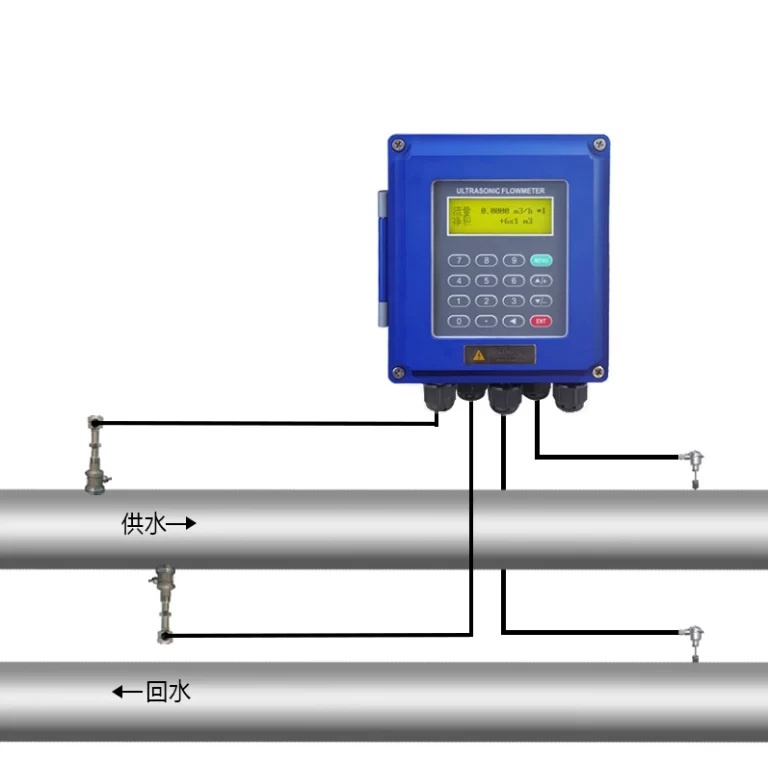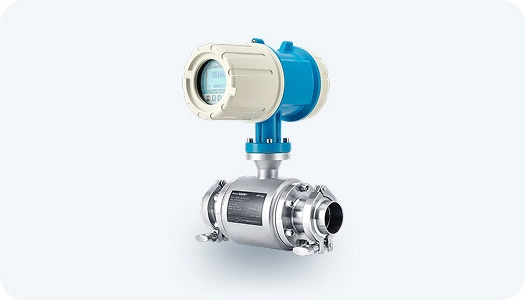-
Date:2025-09-26
-
Page View:68
A BTU flow meter, also known as an energy meter, is a device used to measure the heat energy generated or consumed in a heating or cooling system. A BTU flow meter, often a staple in the HVAC industry. ARTang BTU flow meters offer a range of options. For example: electromagnetic BTU meter, ultrasonic btu meter, etc.
What is a BTU Flow Meter?
A BTU flow meter, often referred to as an energy meter, gauges the heat energy in heating or cooling systems. It operates by evaluating the flow rate and temperature disparity of a liquid as it courses through a heat exchanger.
This meter is comprised of three main components: two temperature sensors, a flow sensor, and a calculator. These sensors are strategically positioned—one at the entrance and the other at the exit of the heat exchanger. The flow sensor tracks the liquid’s movement through the exchanger.
By comparing the readings from the entrance and exit temperature sensors, the meter identifies the temperature variation. Coupled with the flow rate data, the calculator determines the heat energy transfer within the exchanger.
With its precise heat energy readings, the BTU flow meter is invaluable for overseeing energy use in heating or cooling systems across commercial, industrial, and residential spaces. This data aids in enhancing HVAC system efficiency, pinpointing potential leaks or inefficiencies, and highlighting opportunities for energy conservation.
Components of a BTU measurement system:
A key component of this system is the BTU meter. Measure the flow rate and temperature difference of a liquid passing through a heat exchanger.
The system includes:
Two temperature sensors: installed at the inlet and outlet of the heat exchanger to measure the temperature difference.
Flow sensor: This component tracks the flow of liquid through the heat exchanger, which is a key part of energy calculations.
Calculator: It processes data from temperature and flow sensors to provide accurate calculations of heat energy transfer.

Electromagnetic BTU Meter

Ultrasonic BTU Meter
Types of BTU Flow Meters
In the broad field of energy measurement, BTU flow meters are crucial tools. They come in a wide variety, with each type tailored for specific applications and environments. The following is a brief introduction to some main types and their unique attributes:
Electromagnetic BTU Meters:
An electromagnetic BTU meter is a metering device used to measure the flow rate and thermal energy consumption of conductive fluids, such as water, steam, oil, etc. It consists of three main components: a flow sensor, temperature sensors, and a thermal energy calculator.
Electromagnetic energy meters are energy measurement instruments based on the principle of electromagnetic flow meters. They measure cooling or heating capacity and can be widely applied in settings such as residential communities, office buildings, and enterprises/institutions for centralized heating, heat supply, air conditioning, and other thermal energy measurement needs.
Ultrasonic BTU Meters:
Ultrasonic flow meters utilize sound waves to determine flow rate. They transmit sound waves through the flowing fluid; any change in frequency (due to the Doppler effect) clearly reflects the flow rate. Ultrasonic flow meters are non-intrusive and offer advantages such as no restriction on pipe diameter, no pressure loss, and a wide range of measurable flow velocities. They possess significant technical advantages, particularly in measuring large-diameter water flow.
They can be widely used for heat measurement in systems for centralized heating, water supply, air conditioning, boilers, etc., in residential communities, office buildings, enterprises, and institutions.
Applications of BTU Flow Meters
Thanks to their accuracy and versatility, BTU flow meters find applications extending far beyond a single sector. Instead, they are utilized across various fields, each leveraging their robust capabilities in thermal energy measurement. Let's delve into the advantages these meters offer:
Residential Applications:
BTU flow meters in residential settings help homeowners track the energy consumption of their heating and cooling systems. They are used for monitoring home heating systems, tracking energy usage in multi-story buildings, and ensuring a comfortable living environment.
Industrial Applications:
Whether in manufacturing, chemical processing, or the food and beverage industry, significant heating or cooling processes are often essential. BTU flow meters help closely monitor energy consumption, which is crucial for maintaining product quality and safety standards. Furthermore, precise measurements aid in detecting inefficiencies or leaks, thereby protecting corporate profitability.
HVAC Systems:
Heating, Ventilation, and Air Conditioning (HVAC) systems are central to creating comfortable environments, be it in offices, shopping malls, or airports. BTU flow meters in HVAC setups ensure these systems operate at peak efficiency, conserving energy while maintaining optimal temperatures. Regular monitoring also helps prevent system failures or inefficiencies, guaranteeing a consistently comfortable experience.
What Is The Difference Between Flow Meter And BTU Meter?
Flow meters measure flow, and heat meters measure heat. The heat meter consists of an integrator (calculator), a flow meter, and a pair of temperature sensors. The first detection is the supply/return water temperature and flow rate, and then the integrator is used to calculate the heat. The basic principle is Q=Cm△t.










